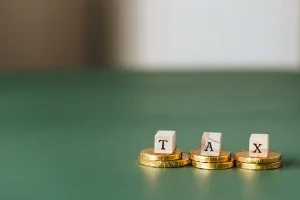Buying your first home is one of the most exciting (and nerve-wracking) milestones in life, especially in a country like Australia, where the property market can be tough to crack. For many, saving up for that elusive house deposit feels like an uphill battle. This is where the First Home Super Saver Scheme (FHSSS) comes in—an initiative introduced by the Australian government to help first-home buyers like us get closer to owning their dream home.
When my husband and I first heard about this scheme, we were skeptical. Could it really help us save faster for a deposit? Was it worth it? We weren’t sure. But after doing our research and eventually diving in, we discovered that the First Home Super Saver Scheme is not only beneficial but can also make a real difference. I want to share our journey, walk you through how the scheme works, and hopefully answer the big question on your mind: Is it worth it?
What is First Home Super Saver Scheme?
The First Home Super Saver Scheme was introduced in 2017 with one main goal: to make home ownership more affordable for first-time buyers. It allows you to use your superannuation (super) account as a savings vehicle for your home deposit, taking advantage of the lower tax rates that apply to super contributions.
We first heard about this from a friend who had just started saving for his own home. He mentioned that the government’s new scheme let first-home buyers save more effectively by contributing through their superannuation. His excitement sparked our curiosity. Could this really help us save for a home?
Our Initial Skepticism and Research
At first, we weren’t convinced. The idea of using superannuation for something other than retirement seemed risky. However, after a bit of research, it started to make sense. By saving through super, we’d be taking advantage of the concessional tax treatment—meaning we’d pay less tax on our savings than we would if we were saving in a regular bank account.
We decided to give it a go, but before jumping in, there were a few important steps we needed to take. Let me walk you through the process we followed, step by step.
Step 1: Check Your Eligibility

Before getting excited about the benefits of the FHSSS, we had to first check if we were eligible. Not everyone qualifies, so here’s what you need to meet:
- You must be at least 18 years old.
- You’ve never owned a property in Australia before (this includes investment properties).
- You intend to live in the home for at least six months within the first 12 months of buying it.
- You haven’t used the FHSSS before.
Step 2: Confirm That Your Super Fund Allows It
Not all superannuation funds allow the First Home Super Saver Scheme. We were lucky that our super funds were onboard, but it’s important to double-check with your fund before making any contributions. If your current fund doesn’t support the scheme, you may need to switch to one that does.
Step 3: Calculate How Much to Contribute (and Watch Those Caps!)

Once we confirmed our eligibility and that our super funds allowed the scheme, the next step was to figure out how much we could contribute. Before July 2022, the scheme allowed up to $15,000 per financial year, with a total cap of $30,000 across all years. However, the cap has since been increased to $50,000, which is a huge advantage for first-home buyers starting their savings journey now.
But there’s more to consider. While contributing under the FHSSS, you must also keep in mind the annual limit for concessional (before-tax) contributions, which is currently $27,500. This includes your employer’s contributions as well as any salary sacrifices you make.
Step 4: Start Contributing (We Chose Salary Sacrifice)
With our plan in place, we decided to make contributions via salary sacrifice—a method where a portion of your pre-tax income is automatically diverted to your super fund. This was a game changer for us because it made saving effortless. We filled out the necessary forms and handed them to our payroll department, explaining that these contributions were for the FHSSS. After that, the money started flowing straight into our super account.
We contributed regularly for about a year and a half, and during that time, we hardly noticed the money being deducted from our paychecks. It was comforting to know that this money was locked away in our super and couldn’t be easily spent on impulse purchases!
Step 5: Request a Determination and Withdraw Your Funds
Fast forward to mid-2020—we were finally ready to buy our first home. The next step was to request a determination from the Australian Taxation Office (ATO). This is an official calculation of how much you can withdraw from your super under the FHSSS, including any deemed earnings (interest) on your contributions.
We did this through the MyGov website by linking to the ATO services and entering all of our eligible contributions. Once the ATO processed our request, we received a determination letter outlining the total amount we could withdraw.
With the determination in hand, we found the house we loved and signed the contract. Then, we requested the release of our FHSSS funds. This process took about 15-20 business days, so be sure to factor in this waiting period when planning your home purchase. Also, note that the ATO withholds tax when you withdraw your FHSSS funds. This is based on your marginal tax rate, plus a 2% Medicare levy, but you do get a tax rebate of 30% on the FHSSS amount.
The Benefits: Is It Really Worth It?
So, now that we’ve gone through the process, what did we gain from using the First Home Super Saver Scheme? Let’s break it down.
1. Tax Savings

One of the biggest advantages of using the FHSSS is the tax benefit. Since contributions to your super are taxed at only 15% (rather than your marginal income tax rate), we ended up saving a significant amount in taxes. In fact, when we withdrew the funds, we got an additional tax rebate, which boosted our tax refund for that year. Compared to saving in a regular bank account, this was a no-brainer.
2. Faster Savings
Saving through super also helped us build our deposit faster. We contributed regularly via salary sacrifice, which meant that the money was automatically locked away and couldn’t be spent. Plus, the scheme allows you to withdraw not just your contributions but also the deemed earnings on those contributions. So, by the time we were ready to buy, we had more money saved than we would have if we’d just been saving in a regular account.
3. Discipline and Focus
Another unexpected benefit was the discipline that came with saving through super. Since the money was locked away, we couldn’t touch it until we were ready to buy a home. This kept us on track and prevented us from dipping into our savings for other expenses.
Final Thoughts: Is the First Home Super Saver Scheme Worth It?
For us, the answer is a resounding yes. The First Home Super Saver Scheme was instrumental in helping us save for our house deposit in a faster, more tax-efficient way. It’s not a magic solution, but if you’re disciplined and committed to saving for your first home, it’s definitely worth considering.
That said, the scheme isn’t for everyone. It’s important to understand the rules and limitations, and it’s always a good idea to consult a financial advisor to ensure it fits your personal circumstances. The key is to do your research, understand the potential benefits, and make an informed decision.
At the end of the day, buying your first home is a huge milestone, and the FHSSS can be a helpful tool in making that dream a reality. We’re incredibly glad we took the plunge, and now, we’re enjoying the home we worked so hard to save for.


